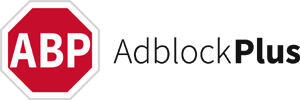We need your support and see that you installed an adblocker. Please help us by whitelisting, pausing or disabling adblock for our website greatestdivesites.com. You can also make a small donation.



Indonesia Liveaboards: Messages
Take a look at the messages of member indonesia_liveaboards. You can visit the corresponding dive site by clicking at the link or take a look at each message by clicking 'view'.
, if you would like to give Greatest Dive Sites permission, only by request, to upload dive items to your FaceBook account and visa versa.
Sangalaki Island was first opened to divers in 1993. Despite the effort required to get there and the poorly run dive resort on the island, divers still found the trip worthwhile because the diving was so breathtaking. After a short closure and change of ownership in 2007 the island's dive resort is now open again and being run by a respected figure in Asian diving so the future looks bright for Sangalaki and the divers that visit.
Sangalaki is most famous for the large amounts of manta rays that come to feed on the plankton and visit cleaning stations here. The dive site names highlight the manta ray proliferation with names like manta avenue, manta parade and manta run. It is not uncommon to see 15-20 manta rays at one time, particularly around the full moon. The manta rays are usually seen filter feeding near the surface, their wings often breaking the water, so snorkellers can enjoy the spectacle as much as divers. Manta rays can also be seen foraging on the sanding bottom for food, a sight rarely seen in other places.
Although the mantas take centre stage, after a few dives you may start to look around for something else of interest underwater. The reef life around Sangalaki is very healthy, partly due to it's protection under Indonesian Marine Park status.
The best diving in Sumatra is Pulau Weh, a small island off the north west coast in Aceh province. Aceh province has been politically unstable for years and the December 2004 Asian tsunami also did devastating damage to the area. However the majority of dive sites escaped lightly with most of the damage being done from 0-10m deep with deeper areas of dive sites spared.
Pulau Weh is located off the north western tip of Sumatra and is actually Indonesia's furthest beach to the northwest. It's in the Indian Ocean and the diving season is the same as west coast Thailand and Malaysia with the high season running from November to April. There is accommodation and dive centers on Iboih where the jungle meets the beach or on Gapang Beach which has a nice house reef.
The marine life around Pulau Weh is superb on fringing reefs, walls and wrecks. There are over 20 dive sites around Pulau Weh, Pulau Rubiah and other surrounding islands. Many of the dive sites are suitable for all levels of diver but there are also some strong drift dives and some deep decompression dives that are only suitable for experienced divers.
Batee Tokong has very impressive marine life on it's steep slopes covered with encrusting sponge, zigzag clams and gorgonian sea fans. Pantee Aneuk Seuke (The Canyon) is a good dive spot to see manta rays. Napoleon wrasse can also be seen. Pantee Peunateung is a deep drop off to 70m where big schools of pelagic can be seen including barracuda and trevally. Currents can be strong here. Batee Gla is a also a good drift dive with strong currents. Rock formations create swimthroughs and archways framed by gorgonian sea fans and large schools of fish including snapper, fusilier, banner fish and surgeonfish. Pulau Seulako offers some good drift diving with the chance to see big fish. Arus Balee is a drift dive where the nickname given to the current hints at the strength of the flow. It is called the Acehnese Arus Balee, or Bastard Current! A rocky pinnacle in the passage between Pulau Seulako and Pulau Rubiah attracts bigger fish like barracuda, trevally and sharks. Other popular dive sites are Batee Meudoro Pinnacle, Shark Plateau and the Sophie Rickmers Wreck.
Dive site the Twilight Zone is another amazing black sand shore dive just off the beach at Biangabang Village, Pantar Island. Lava flows and underwater hot springs make for very nutrient rich waters as can be seen by all the bioluminescence during night dives. Keen muck divers could spend a week at this beach alone, exploring it from deep to shallow. Swimming close to the seabed will unearth all manner of weird life including bobbit worms, snake eels, mimic octopus, Spanish dancers, Pegasus sea moths, spearing mantis shrimps and gurnard lionfish.
Batu Gila, to the north east of Dominic Rock, is one of the best Togian dive sites for big fish action. The exposed ridge offers the chance to see scalloped hammerhead sharks, grey reef sharks and silvertip sharks. Manta rays, tuna and large schools of barracuda can also be seen. Visibility is usually excellent but currents can be strong and as the dive site is between 28m and 45m deep, this is a dive for experienced divers only.
The Blue Light Cave dive starts on the top of the wall at 2m with a descent down a narrow funnel to 20m where it opens up into a large cavern with a bottom at 30m. Divers exit the cave on the wall at 45 metres or deeper at 65m. This is a dive only suitable for experienced divers.
The Jellyfish Lake is full of four species of jellyfish that have no sting and are therefore harmless to divers. The lake was once a lagoon surrounded by a coral atoll and open to the ocean but over time the coral atoll surrounding the lagoon has been raised up by geological forces, land locking the lake and its inhabitants. Although once stingers, the jellyfish have lost their sting due the absence of natural predators such as turtles. The jellyfish are Mastigias Papua, Aurelia Aurelia, Tripedalia Crystophora and the upside down Cassiopeia Ornate.
The 5 square kilometer lake is fed ocean water from underground fissures and is slightly tidal. Its maximum depth is 18m in the middle; the shore line is lined with mangrove. Visibility is 10-15 meters. Other marine life in the lake includes flatworms, sea cucumbers, small fish and a file snake which is also non poisonous.
Gili Lawu Laut is a pinnacle rock to the north of Komodo Island. Strong currents and choppy surface conditions often make this dive site undiveable and it's certainly not a dive for beginners. The pinnacle starts at the surface and drops below 40m. Visibility averages 20m and is often 30m plus. Many species of nudibranch can be seen in Komodo's bio diverse waters.
Sponges and soft corals carpet the rock along with seafans, seawhips, feather stars and sea apples. Octopus and cuttlefish are often seen. Schools of black snapper, including juveniles are common, as are schools of batfish. Other reef fish include angelfish, butterflyfish, parrotfish, filefish, sweetlips and fusiliers. Moray eels are also numerous. Barracuda, tuna, mackerel and trevally are often seen in the blue water away from the pinnacle.
Pantai Merah is also called Pink Beach because of its nearby beach with pink sand. This is a small critter dive around large coral outcrops and is a nice afternoon dive and a break from the strong currents of other sites. Large shoals of glass fish carpet the reef. Brush them aside to see nudibranchs, bearded scorpionfish, frogfish and seahorse. Ribbon eels can be seen poking out of the sand and rubble. Visibility is variable. It can be as good as 25m but can drop to 10m. Maximum depth is 30m.
Meno Wall is covered with soft corals down to 24m and is a popular day and night dive. The usual reef fish are here and turtles are often seen. Crustaceans and nudidranchs are numerous. Spanish Dancers can be seen on night dives. Turtles are common on Gili Island dive sites, thanks partly to a Turtle Nursery on Gili Air.

